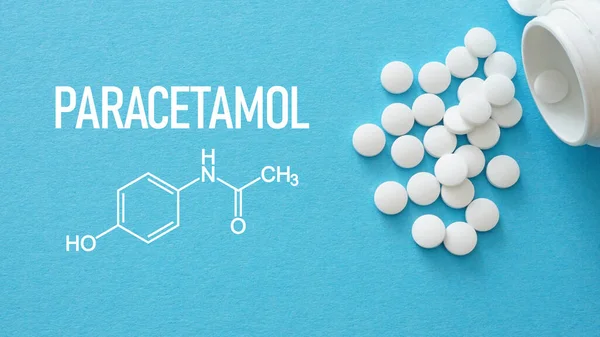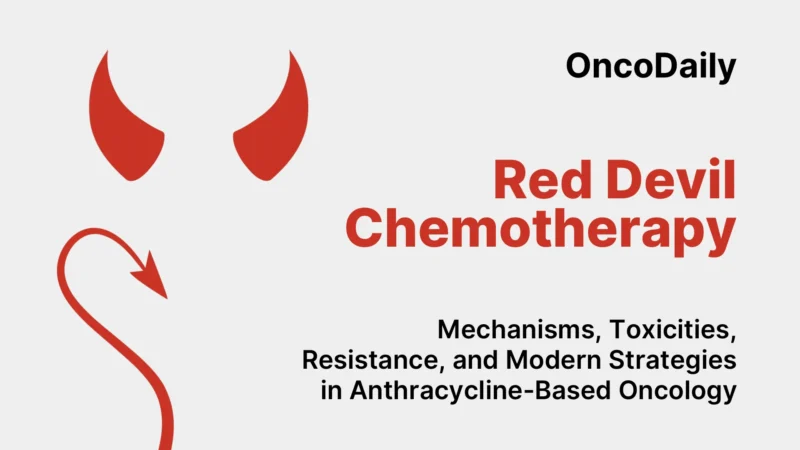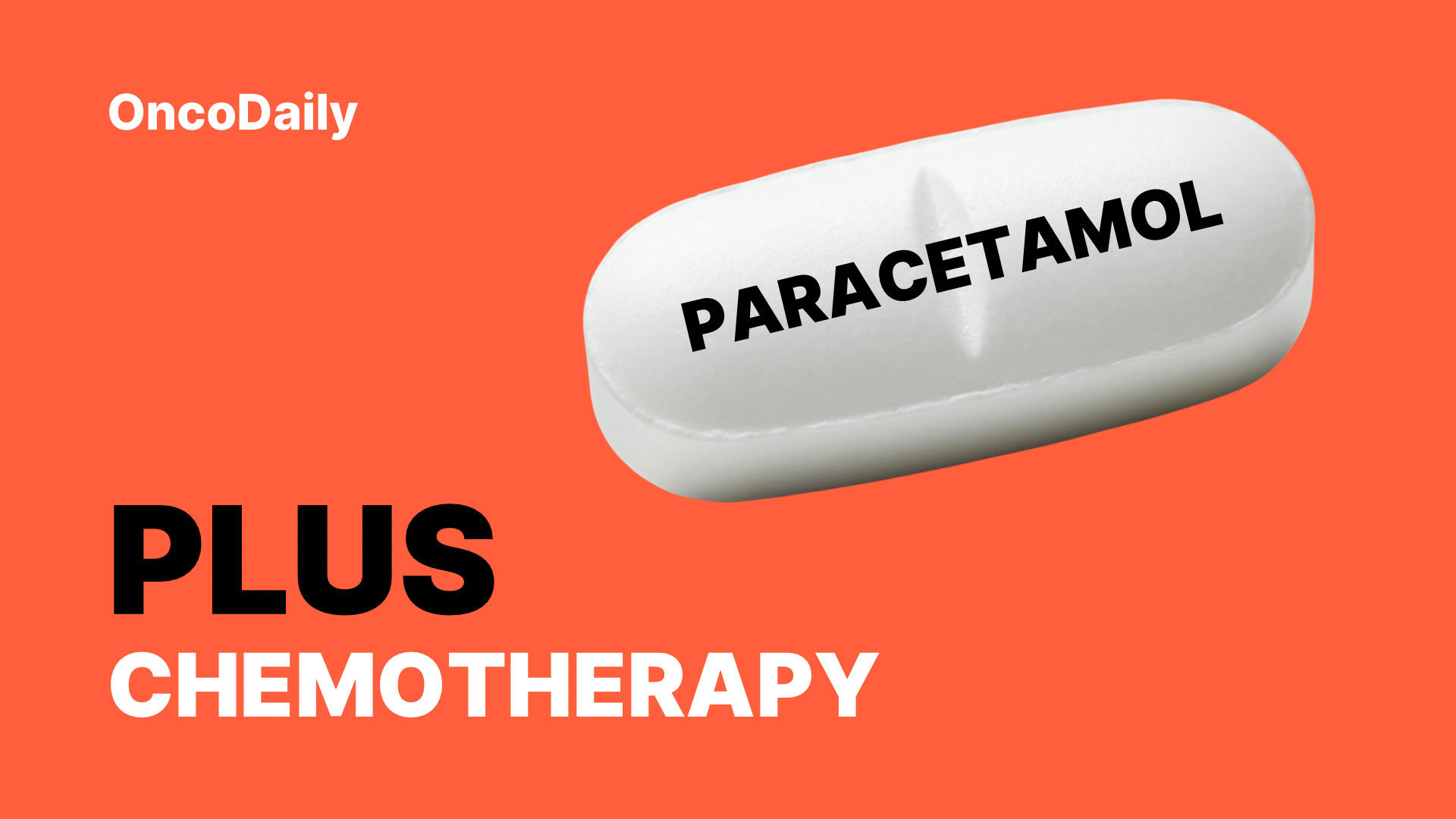Paracetamol (acetaminophen) is widely used for pain and fever management in cancer patients receiving chemotherapy, where it plays an important role in supportive care. The combined use of paracetamol and chemotherapy is generally considered safe for symptom relief, but concerns arise regarding hepatotoxicity, especially at higher doses or when chemotherapy agents with liver toxicity are also administered. Recent evidence emphasizes that patients treated with paracetamol during chemotherapy require careful monitoring of liver enzymes and appropriate dose adjustments to maintain both safety and therapeutic benefit.
Potential drug interactions with chemotherapy drugs are typically limited but may involve altered metabolism through cytochrome P450 enzymes, potentially increasing toxicity risks or reducing therapeutic efficacy. Guidance from recent clinical studies and oncology guidelines recommends cautious use of paracetamol during chemotherapy, emphasizing individualized assessment based on the specific chemotherapy regimen, patient liver function, and overall clinical status.

Photo: Depositphotos
Paracetamol remains a valuable analgesic and antipyretic during chemotherapy when used judiciously alongside ongoing monitoring, with attention to interactions and hepatic safety to optimize patient outcomes.
Mechanism of Action of Paracetamol Relevant to Cancer Patients
Paracetamol primarily exerts its analgesic and antipyretic effects via central inhibition of cyclooxygenase (COX) enzymes, especially COX-2, in the brain and spinal cord. This inhibition reduces the synthesis of prostaglandins, which mediate pain and fever. Unlike nonsteroidal anti-inflammatory drugs (NSAIDs), paracetamol’s anti-inflammatory activity is minimal, partly because it acts in environments with low peroxide concentrations typical of the central nervous system rather than inflamed peripheral tissues.
A key metabolite of paracetamol, N-arachidonoylphenolamine (AM404), formed in the brain, also contributes to its analgesic effect. AM404 activates cannabinoid receptors (CB1 and CB2), inhibits endocannabinoid reuptake, and stimulates transient receptor potential vanilloid 1 (TRPV1) receptors, modulating pain signaling pathways. This multimodal central mechanism may explain paracetamol’s efficacy in managing mild to moderate cancer pain, with a favorable safety profile compared to opioids and NSAIDs commonly used in oncology.
Metabolism and Elimination Pathways
Paracetamol is rapidly absorbed from the gastrointestinal tract and metabolized predominantly in the liver. About 90% undergoes phase II conjugation to form non-toxic glucuronide and sulfate metabolites excreted via the kidneys. A small fraction (approximately 5-10%) is oxidized by cytochrome P450 enzymes (particularly CYP2E1) to produce a reactive intermediate, N-acetyl-p-benzoquinone imine (NAPQI), which is detoxified by glutathione conjugation.
Under normal doses, this detoxification is efficient. However, when glutathione stores deplete—due to overdose, malnutrition, or liver impairment—the accumulation of NAPQI leads to hepatocellular damage. This pathway is particularly significant for cancer patients receiving chemotherapy, as many chemotherapeutic agents are hepatotoxic or induce oxidative stress, increasing vulnerability to paracetamol-induced liver injury. Samir S Ayoub Temperature (Austin). 2021
Potential for Hepatotoxicity, Especially in Metabolically Vulnerable Patients
While paracetamol is generally safe at therapeutic doses, its potential for hepatotoxicity warrants caution in cancer patients undergoing chemotherapy. Chemotherapy-induced liver dysfunction, altered glutathione levels, and polypharmacy may predispose these patients to enhanced risk of liver injury from paracetamol. Yuvraj Anandrao Jagtap 2024
Recent evidence emphasizes the need for dose adjustment and careful monitoring of liver function tests in oncology patients using paracetamol, particularly those with pre-existing liver disease or receiving hepatotoxic chemotherapy regimens. Despite these risks, paracetamol remains a preferred analgesic given its effectiveness and lower risk profile compared to alternatives if managed appropriately. Nobuko Ohashi, Front. Pharmacol., 30 November 2020
Clinical Evidence on Paracetamol Use During Chemotherapy
Paracetamol is frequently used as a first-line analgesic and antipyretic in cancer patients undergoing chemotherapy due to its general safety and effectiveness. Recent clinical trials and studies over the past five years have focused on evaluating its safety profile, optimal dosing, and potential impact on chemotherapy outcomes.
Safety and Efficacy Studies
A randomized placebo-controlled trial investigated paracetamol’s analgesic efficacy in patients with advanced cancer receiving stable opioid therapy. In this study, oral paracetamol (1000 mg four times daily) administered for 3 days showed consistent pain relief without increasing opioid consumption or causing significant adverse effects. Liver function was closely monitored, with no notable hepatotoxicity observed in patients without pre-existing liver conditions.
Another important area of research includes the evaluation of paracetamol’s safety in terms of hepatotoxicity. Monitoring of liver function markers such as ALT and bilirubin during chemotherapy is essential, as chemotherapy drugs like platinum compounds and anthracyclines can impair hepatic metabolism. Clinical data suggest that standard therapeutic doses of paracetamol (up to 4 g daily) do not exacerbate liver injury when used cautiously alongside these agents, but caution is warranted for patients with compromised liver function.
Dosing, Duration, and Toxicity Monitoring
Clinical guidelines recommend a maximum daily dose of 4 grams for paracetamol in cancer patients unless dose reduction is needed due to liver impairment or drug interactions. Short-term use of paracetamol during episodes of pain or fever is supported by evidence, but prolonged or high-dose administration requires vigilant monitoring of hepatic enzymes and clinical symptoms to avoid toxicity.
Emerging data also underline the importance of assessing individual metabolic capacity, as chemotherapy may alter cytochrome P450 enzyme activity, influencing paracetamol metabolism and the risk of accumulation of toxic metabolites.
Impact on Chemotherapy Efficacy and Side Effect Profile
Currently, there is no strong clinical evidence indicating that paracetamol interferes negatively with the antitumor efficacy of chemotherapy drugs. Its use is generally not associated with increased chemotherapy toxicity beyond liver considerations. However, careful pharmacovigilance is advised, particularly in multi-drug regimens and in patients with polypharmacy that may affect drug metabolism pathways.
In summary, paracetamol remains an important component of symptom management during chemotherapy, offering effective pain and fever control. Recent clinical evidence supports its safety when used within recommended doses and with proper monitoring in cancer patients, emphasizing the need for individualized therapy plans to optimize patient outcomes.
Drug-Drug Interactions Between Paracetamol and Chemotherapy Drugs
Paracetamol (acetaminophen) is commonly co-administered with chemotherapy drugs to manage pain and fever in cancer patients. While generally considered safe, paracetamol can interact with chemotherapy agents at metabolic and pharmacodynamic levels. Cisplatin, a widely used chemotherapeutic, has been studied extensively for interactions with analgesics including paracetamol. In vitro and in vivo data indicate that paracetamol may act as a chemo-enhancer by promoting oxidative stress and depleting glutathione in cancer cells, potentially increasing cisplatin’s cytotoxicity. However, this can lead to additive hepatotoxic and nephrotoxic effects as both drugs carry potential organ toxicities.
Other chemotherapy agents metabolized by liver enzymes might have altered pharmacokinetics when given with paracetamol, though clinically significant interactions are rare. Paracetamol’s lack of anti-inflammatory activity reduces risks of overlapping toxicity compared to NSAIDs.
Role of Cytochrome P450 Enzymes
Paracetamol is metabolized partly by CYP450 enzymes, primarily CYP2E1, CYP1A2, and CYP3A4, to form the toxic metabolite NAPQI. Several chemotherapy drugs modulate CYP450 activity, which may influence paracetamol metabolism and increase risk of toxicity. For example, inhibitors of CYP3A4 can reduce paracetamol activation to NAPQI, potentially reducing toxicity but also altering analgesic efficacy. Inducers of CYP450 enzymes can increase metabolism, raising hepatotoxic risk, especially in patients with compromised liver function. Azza El-Sheikh Medicina (Kaunas). 2021
Cytochrome P450 interactions are critical in managing combined therapies, particularly in multi-drug regimens and those including agents like erlotinib, imatinib, and others known to affect CYP450 enzymes. Agnieszka Karbownik 2017
Specific Cautions and Contraindications
Paracetamol requires cautious use in patients with hepatic impairment or those receiving hepatotoxic chemotherapy agents, with dose adjustments and liver function monitoring advised. In contrast, for patients with reduced renal function, nonsteroidal anti-inflammatory drugs (NSAIDs) should be avoided or used cautiously, making paracetamol the preferred analgesic. Opioid therapy remains important in oncology, but guidelines emphasize careful titration to balance effective pain relief with risks such as sedation, constipation, and respiratory depression. In addition, clinicians must pay close attention to drug interactions, particularly with chemotherapy agents metabolized by cytochrome P450 enzymes, to prevent altered plasma drug concentrations. Finally, special populations such as pediatric, elderly, and frail patients require individualized analgesic regimens that take into account altered pharmacodynamics and existing comorbidities.
Patient Monitoring Recommendations
Routine assessment of pain intensity and quality using validated scales is essential to guide analgesic adjustments in cancer patients. When paracetamol or NSAIDs are used during chemotherapy, baseline and periodic monitoring of hepatic and renal function is required to ensure safety. Proactive surveillance and management of adverse effects, including opioid-related constipation and sedation, are also recommended. Optimal pain control is further enhanced through multidisciplinary support, incorporating psychosocial interventions, physical therapies, and patient education. Finally, informing patients and caregivers about the correct use of analgesics, potential side effects, and when to seek medical attention is vital for ensuring adherence and safety. Robert A Swarm, J Natl Compr Canc Netw 2018
Paracetamol Use in Patients with Liver Impairment or Multiple Comorbidities
Paracetamol remains the analgesic of choice for pain and fever management in cancer patients due to its favorable safety profile. However, in patients with liver impairment—common in cancer due to metastases, viral hepatitis, or chemotherapy-induced hepatotoxicity—paracetamol use warrants caution.
Recent large-scale cohort studies have shown that regular or high-dose paracetamol use may be associated with a slightly increased risk of liver cancer, potentially linked to cumulative hepatotoxicity through mechanisms such as glutathione depletion and oxidative stress. Therefore, guidelines recommend limiting the daily dose of paracetamol to no more than 2 grams in patients with cirrhosis or significant liver dysfunction, and close monitoring of liver function tests during therapy.
In patients with multiple comorbidities that risk organ dysfunction (renal, cardiac), thorough assessment should be conducted before initiating and during paracetamol therapy to balance analgesic benefits against toxicity risks.
Pediatric and Elderly Considerations
Analgesic needs and drug metabolism differ markedly in pediatric and elderly cancer patients. In children, dosing of paracetamol must be carefully calculated by weight and age, with special attention to avoid overdose.
Elderly patients frequently exhibit impaired hepatic metabolism and polypharmacy, increasing the likelihood of adverse drug reactions and interactions. Reduced hepatic clearance can elevate paracetamol plasma levels and metabolite accumulation, raising hepatotoxicity risk. The elderly should receive the lowest effective dose, with vigilant liver monitoring and avoidance of prolonged high-dose use.
Co-administration with Other Analgesics or Supportive Care Medications
Combination therapy is common in oncology supportive care, aiming to optimize pain relief while minimizing side effects. Paracetamol is often combined with opioids to allow opioid dose reduction and improve pain control. Co-administration with NSAIDs requires caution due to overlapping gastrointestinal, renal, and hepatic risks.
Supportive care drugs such as antiemetics, corticosteroids, and chemotherapy agents can influence paracetamol metabolism primarily via cytochrome P450 enzyme modulation, impacting efficacy and safety. Clinical vigilance and dose adjustments may be needed when paracetamol is administered alongside such agents.
Patient Education Points and Warning Signs
Patients should be advised to adhere strictly to recommended dosing intervals and maximum daily doses of paracetamol to prevent toxicity. They should also be educated about the signs of overdose and liver injury such as nausea, vomiting, abdominal pain, jaundice, fatigue, and dark urine, and instructed to seek immediate medical attention if these occur. It is important to stress the need for patients to inform all healthcare providers about their paracetamol use to avoid duplication when combining with other analgesics or over-the-counter cold and flu remedies. In addition, patients should be encouraged to maintain adequate hydration and avoid alcohol consumption during paracetamol therapy, particularly if they have liver or kidney impairment.
If you experience any new symptoms or allergic reactions during chemotherapy treatment or after using paracetamol, please contact your oncologist or healthcare professional immediately. Do not start taking any new medications or stop your current medicines on your own without medical advice. This is important to ensure your safety and to avoid any complications during your cancer treatment.
You Can Also Read Red Devil Chemotherapy: Mechanisms, Toxicities, Resistance, and Modern Strategies in Anthracycline-Based Oncology by OncoDaily

Future Research Directions
Despite decades of clinical use, the evidence supporting the efficacy and safety of paracetamol specifically in cancer-related pain management during chemotherapy remains limited and inconclusive. Recent systematic reviews highlight a paucity of high-quality randomized controlled trials evaluating paracetamol’s analgesic benefit alone or in combination with opioids in oncology patients.
Notably, there is insufficient data on long-term safety, optimal dosing regimens tailored to different cancer types, stages, and chemotherapy protocols. The potential opioid-sparing effects of paracetamol and its impact on quality of life require further definitive research.
Need for Large-Scale, Prospective Studies
To address these gaps, large-scale, prospective, randomized controlled trials are needed to:
- Evaluate the analgesic efficacy of paracetamol as monotherapy and as part of combination regimens with opioids and adjuvant analgesics in various cancer populations.
- Assess safety profiles, including hepatotoxicity risks, in diverse patient groups with varying comorbidities (e.g., liver impairment, renal dysfunction).
- Examine potential interactions with newer chemotherapy agents and targeted therapies.
- Investigate patient-reported outcomes including pain relief, functional status, and health-related quality of life.
Development of Personalized Pain Management Strategies in Oncology
Advancements in pharmacogenomics, biomarkers, and pain phenotyping offer opportunities to develop individualized approaches to cancer pain management. Future research should focus on:
- Identifying genetic variants influencing paracetamol metabolism and response to tailor dosing and minimize toxicity.
- Integrating emerging non-opioid analgesics, neuromodulation techniques, and complementary therapies with paracetamol for multimodal pain control.
- Leveraging digital health technologies for real-time pain monitoring and therapy adjustment.
- Addressing disparities in pain management through culturally competent, patient-centered care models for vulnerable populations. Wan-Li Wang, Mol Biomed. 2025
Written by Aharon Tsaturyan, MD, Lead of OncoDaily Volunteers, Editor at OncoDaily Intelligence Unit.
FAQ
Is paracetamol safe to use during chemotherapy?
Paracetamol is generally safe when used within recommended doses during chemotherapy. It provides effective pain and fever relief with a favorable safety profile but requires careful monitoring of liver function, especially with hepatotoxic chemotherapy [Samir S Ayoub, 2021; Yuvraj A. Jagtap, 2024].
What are the risks of liver damage from paracetamol in cancer patients?
High doses or long-term use of paracetamol, combined with chemotherapy stressing liver function, can cause hepatotoxicity. Monitoring liver enzymes and dose adjustment are essential to reduce liver injury risk [Nobuko Ohashi, 2020].
How does chemotherapy affect paracetamol metabolism and safety?
Chemotherapy may alter cytochrome P450 enzyme activity, changing paracetamol metabolism and increasing risks of toxic metabolite accumulation. Individualized therapy is recommended based on liver function and regimen [Azza El-Sheikh, 2021].
Can paracetamol interact with chemotherapy drugs?
Generally, paracetamol has limited drug interactions but can increase oxidative stress with drugs like cisplatin, enhancing toxicity. CYP450 metabolism interactions may affect both toxicity and efficacy [Azza El-Sheikh, 2021].
What is the recommended dosage of paracetamol for patients undergoing chemotherapy?
Up to 4 grams daily are recommended unless liver impairment requires dose reduction to 2 grams or less. Short-term use during pain or fever episodes should be monitored [Wang et al., 2025].
Should paracetamol doses be adjusted in patients with liver impairment?
Yes. In patients with significant liver dysfunction, doses are typically reduced and liver enzyme levels closely monitored to avoid toxicity [Vinmec Medical Center, 2025].
What are the warning signs of paracetamol overdose or toxicity?
Watch for nausea, vomiting, abdominal pain, jaundice, fatigue, and dark urine. Immediate medical attention is needed if these signs appear [Royal Children’s Hospital Guidelines, 2020].
Can paracetamol be used together with opioids in cancer pain management?
Yes, paracetamol is often combined with opioids to improve pain control and reduce opioid doses, with monitoring for side effects in combination therapy [Husic et al., 2015].
What precautions should elderly and pediatric cancer patients take when using paracetamol?
In children, dosing should be weight-based to avoid overdose. Elderly patients require lower doses and careful monitoring due to altered metabolism and comorbidities [Hayward KL et al., 2016; Vinmec Medical Center, 2025].
